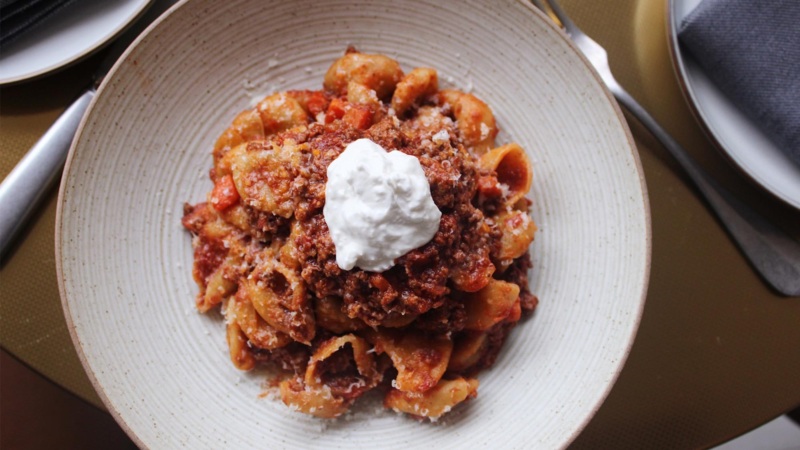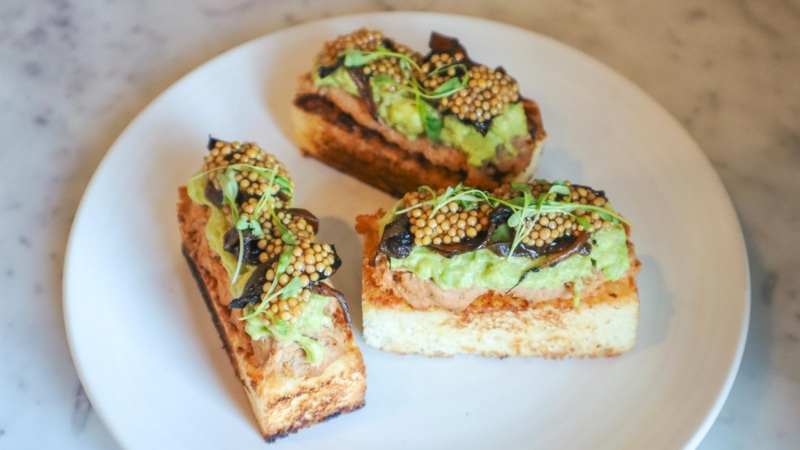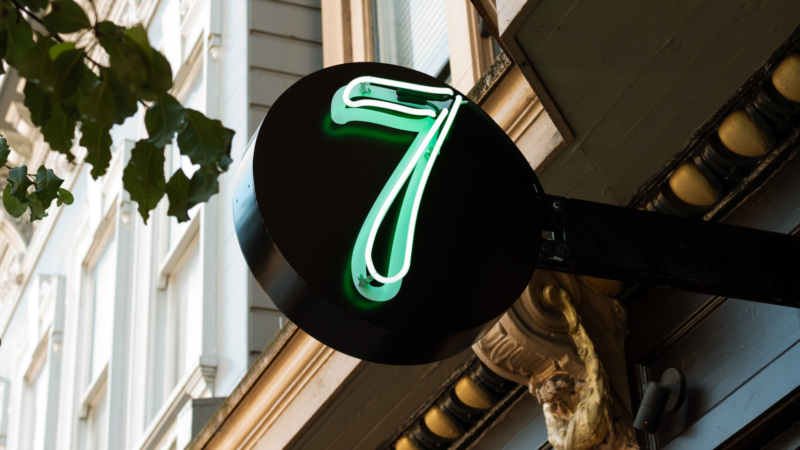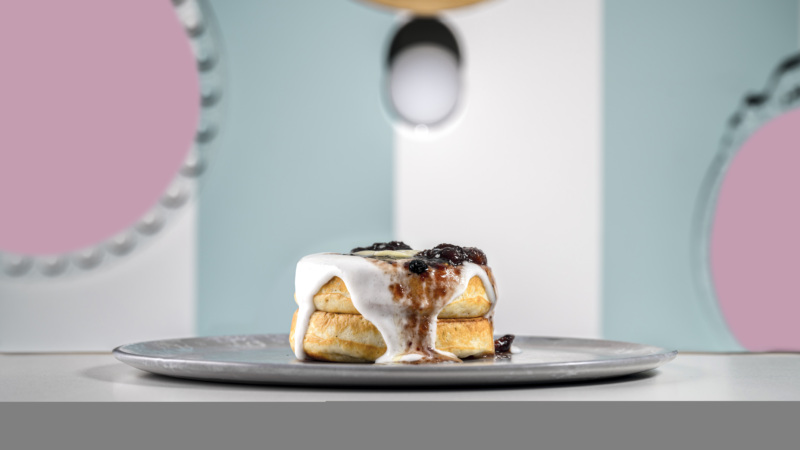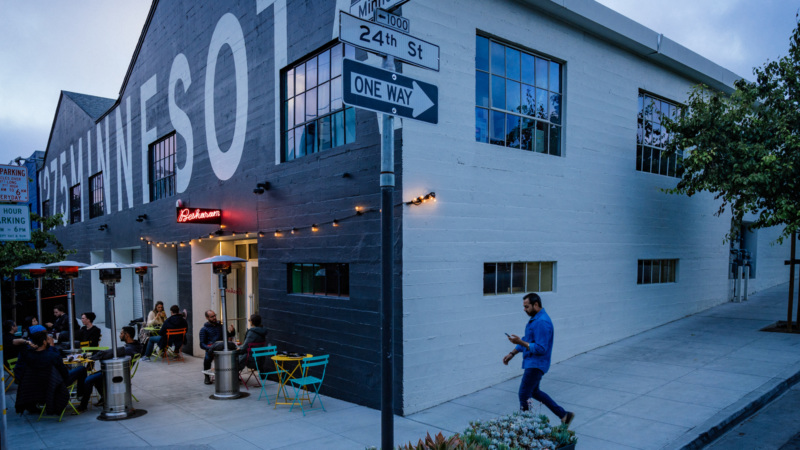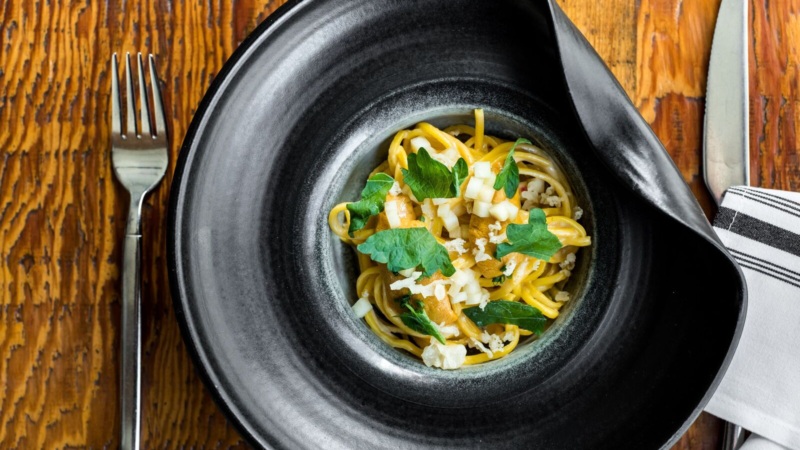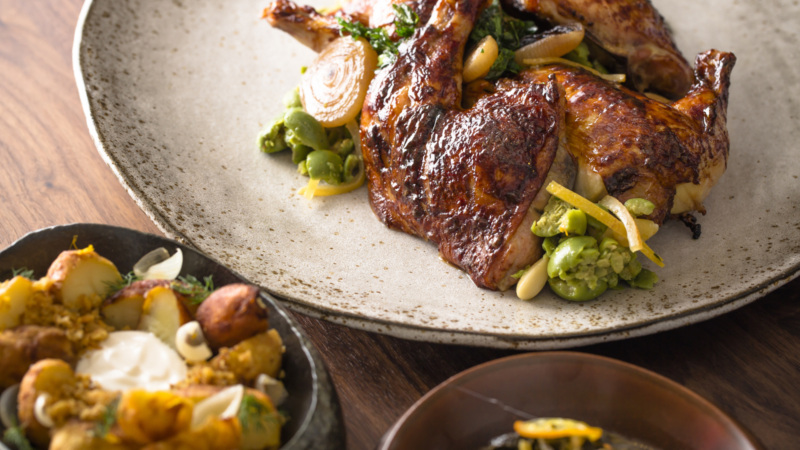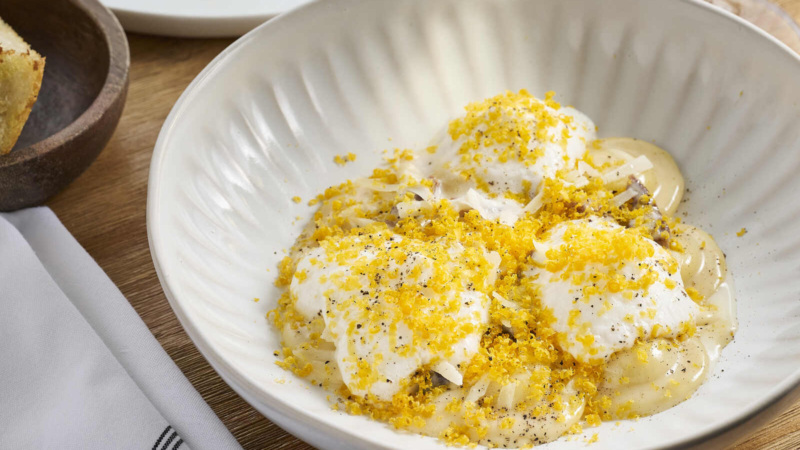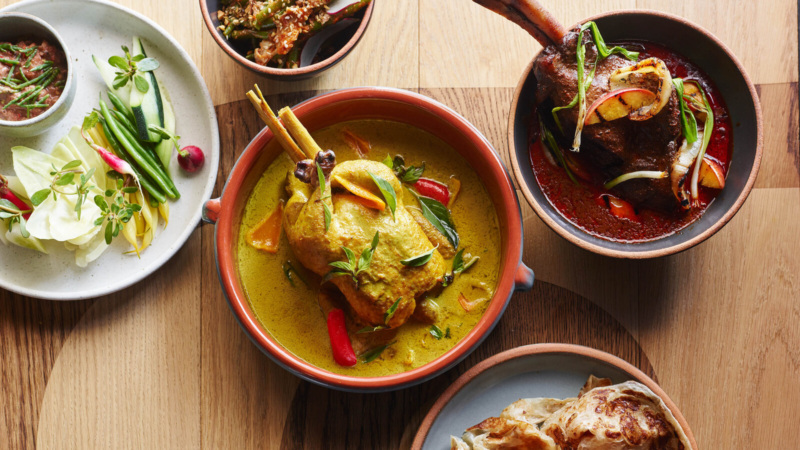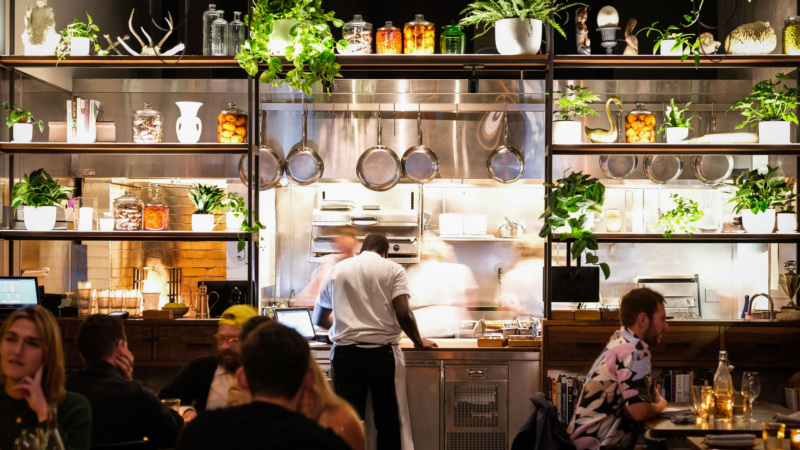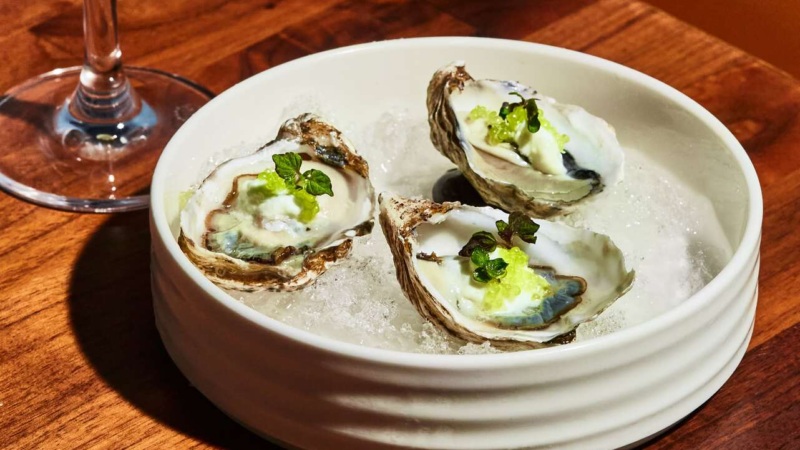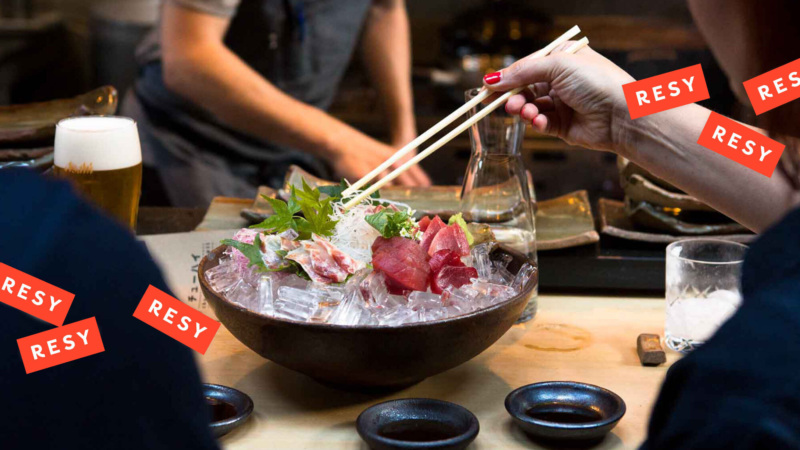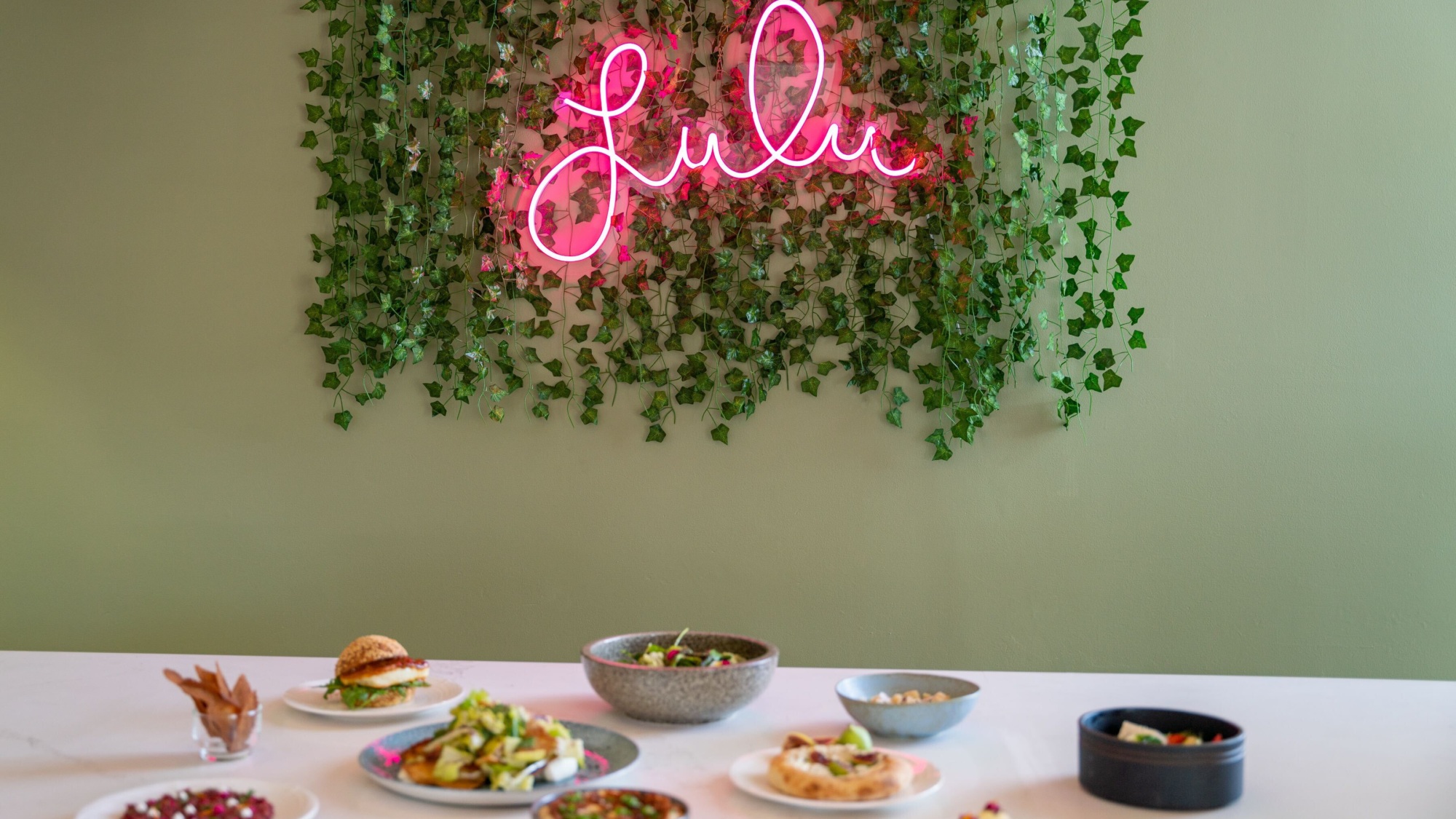
How Mona Leena Blends Palestinian and Californian Flavors at Berkeley’s Lulu
Lulu is the new breakfast/lunch Berkeley spot featuring fresh Palestinian-Californian fare from Mona Leena.
Leena has been cooking in the Bay Area for more than 10 years in a number of renowned restaurants, including Jardiniere and Serpentine, where she was chef de cuisine. She is a first-generation Palestinian, born-and-raised California through and through — and her new restaurant echoes that loud and proud.
Lulu, which translates to “pearl,” was Leena’s nickname growing up, and while this is her first brick-and-mortar, it is not her first foray into entrepreneurship. She ran the Mana’eesh Lady pop-up over the last year, using pizza ovens to bake up soft and fluffy za’atar and cheese topped flatbreads.
We spoke to her to learn more about her new project.
Resy: At what point in your culinary career did you decide you wanted to do your own thing? Was that always the goal or was there a moment? Was the Mana’eesh Lady pop-up always a temporary stepping stone?
Leena: I had always talked about opening up a coffee shop one day during my barista-ing days, but I’ve known I wanted to open my own restaurant the moment I stepped foot in Jardiniere’s kitchen. I was studying to be an SLP — speech language pathologist — at the time and the idea of going through a masters program sounded like hell to me. The Mana’eesh Lady honestly grew and became bigger than I ever expected it to be. I had lost my job due to the pandemic and was just trying to make some extra cash by feeding my neighbors.
How did you find the space? Did you always want to be in Berkeley?
I was always open to Oakland or Berkeley; I knew I didn’t want to go back to San Francisco, for sure. It’s a funny story actually. I had just left a meeting with my broker, who had told me she was having a ton of trouble finding restaurants for sale that matched my criteria. I was super frustrated by that news so I went straight home and literally googled “restaurants for sale east bay” and this shady little posting popped up with a photo of a corner of the restaurant, a table and chair that cited a Gilman District restaurant up for sale.
It turned out to be this teahouse that my husband, dog, and I always passed after grabbing our morning Philz, swearing we’d go have high tea there when it opened back up. It was oddly serendipitous that it ended up being the same place.
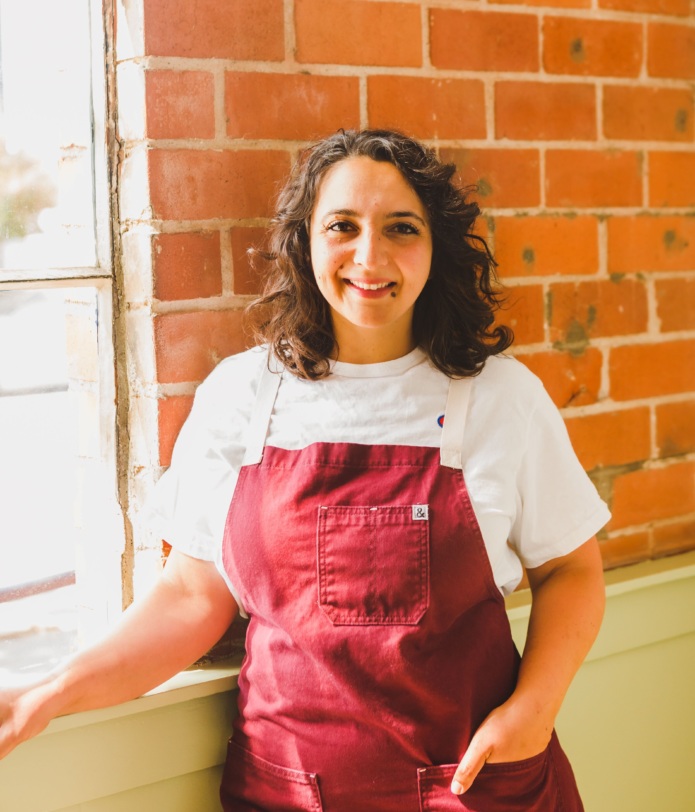
What has been the most difficult part in opening a restaurant?
Honestly, there are two things that stick out now. First, trying to navigate through the city of Berkeley during a pandemic with all offices closed to get everything right, from zoning, to the health department, to fire and building safety. It was a nightmare. I got a different answer from a different person every time I called to ask a question.
The second difficult part was sourcing material and product. Every countertop I chose was sold out because everyone in the Bay Area decided to remodel their homes during the pandemic. The Boose block tables I wanted for the dining room had a 12- to 16-week turn around when they would normally ship in four. My Woodstone oven originally cited six to eight weeks for production but took 12 weeks. Then Sysco had a staffing crisis the week before my opening and had to cancel my massive order of dry goods and disposable containers three days before opening day. I was driving around the East Bay frantically trying to source what I could before opening weekend.
Why did you decide to do a daytime breakfast/lunch spot? Will you introduce dinner at any point?
Simply put, breakfast and brunch are my favorite meals of the day and there is a shortage of consistent, unpretentious places that offer a solid cup of coffee, and fresh breakfast, pastries, and lunch out here. Dinner will come in time. Our refrigeration and storage space is super limited and we have to get kitchen logistics down properly for the current services before we add another one to the mix. I have played around with the idea of hosting pop ups for dinner in the space and have a few cool chefs come check out the place.
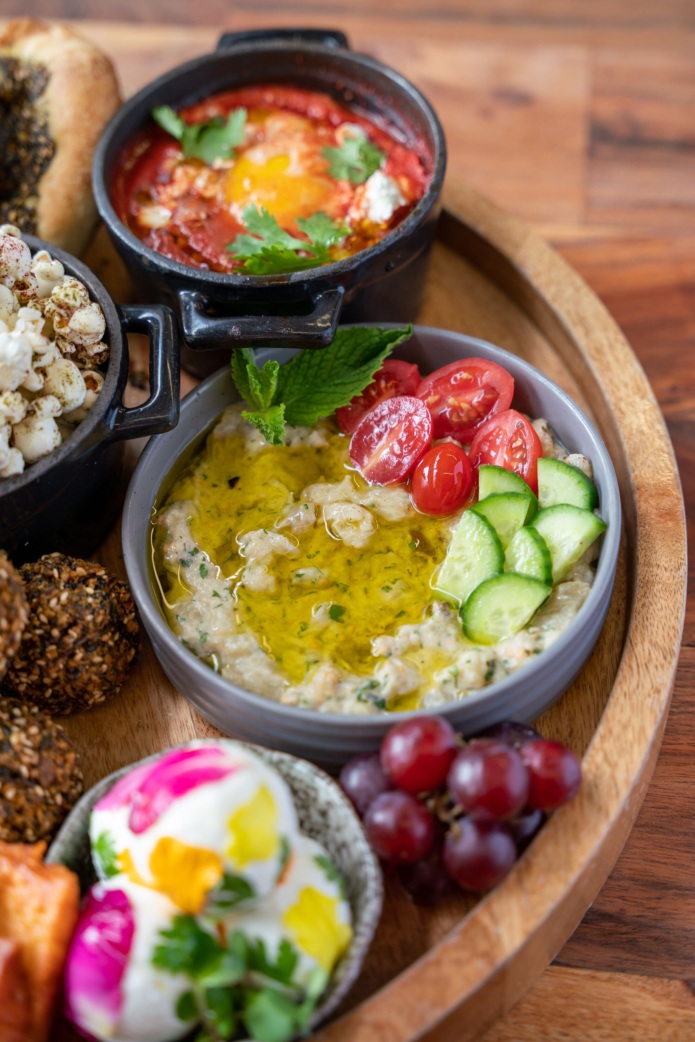
What do you recommend ordering for a first-timer? Let’s say it’s two people. What’s the perfect order?
If you come for brunch, first, come hungry. Then, order the mezze platter of the day, the shouka-quiles and the knafeh pancake. The mezze platter is curated weekly based off of what seasonal items I could find to serve and you’ll never get the same one twice. The knafeh pancake is just absolutely freakin’ divine; I can’t explain it, you have to come in for yourself to understand. And the shouka-quiles tastes like love and truly represents the California-Palestinian inspired cuisine I want to have shine.
We also make this awesome rose-bruleed cappuccino made with Mother Tongue espresso, housemade rose syrup, and then we torch a layer of turbinado sugar on top of the creamy foam to create a creme brulee kind of vibe. It’s so good, and perfectly sweetened.
Name three of your favorite dishes. And what were the inspirations for them?
The fried chicken sandwich is insane. I use breast which is rare to find in the chicken sandwich world as of late and we make our sesame buns in house, reminiscent of a ka’ak simsim bread from Palestine. The chicken is coated in this delicious miso-arak glaze and topped with a fennel and pickled red onion slaw — and you can’t forget the aleppo kewpie mayo.
The halloumi and preserves sandwich is honestly such a decadent breakfast to grab on the go. I let each ingredient shine. House-baked simsim bun filled with wild arugula dressed in Palestinian olive oil and Aleppo pepper, topped with a massive piece of ghee-fried haloumi that is smothered in whatever seasonal jam we have made in house. Right now we are using peach and apricot.
Then the knafeh pancake, of course, I already bragged about it in the question before this, but man, it is fire, but way too big and rich for just one person to get through it, myself included and I’m a glutton for knafeh.
What in specific do find similar to your mother’s Palestinian cooking and the food you grew up with, compared to the French techniques you learned in culinary school?
More than anything, it’s the balance of flavor and manipulation of ingredients. The first thing I learned at Jardiniere was understanding the balance of salt, fat, acid and heat. Chef Morgan put me in charge of all the dressings for garde manger as a way to build my palate, and what I found was I was a natural.
While others struggled to understand what he meant when the recipe was “make it taste good,” I flourished. I believe watching my mother eyeball her measurements while creating perfect balance in flavor every time trained my palate to understand how to build and understand flavors and how each ingredient contributed to the overall balance.
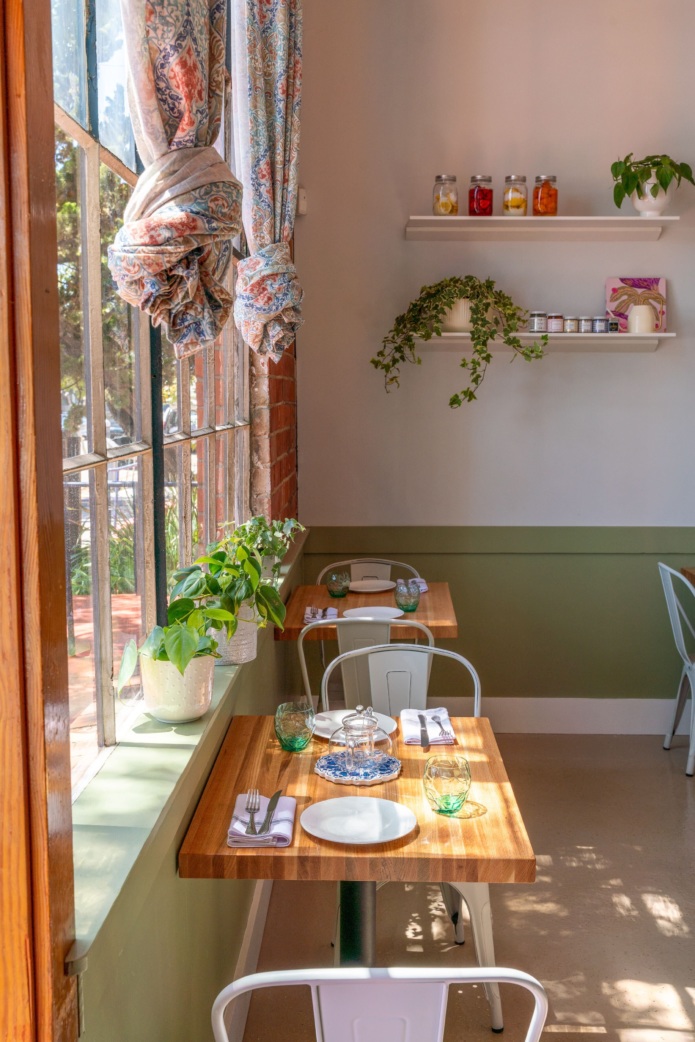
What advice to you have for young cooks today trying to find their path and place?
If you’re trying to be Insta-famous, you’re in it for the wrong reasons. Abort immediately.
Don’t waste your money on culinary school. You’ll learn more making minimum wage as a prep cook than you will going into debt in culinary school.
Know your worth and hold your boundaries for yourself, but understand that the only way you’ll move up in this industry is with hard work and humility. This is not an easy job, and it never will be, so you really have to LOVE it and not be able to see yourself doing anything else to succeed and stick with it.
What does the future look like for you? More restaurants?
Ha! Oh man, let’s see how this first one goes and I’ll get back to you. I definitely want to revive the Mana’eesh Lady sometime soon.
Omar Mamoon is a San Francisco writer, cookie dough professional, and founder of nonprofit Libros Para Todos. Find him at @ommmar



